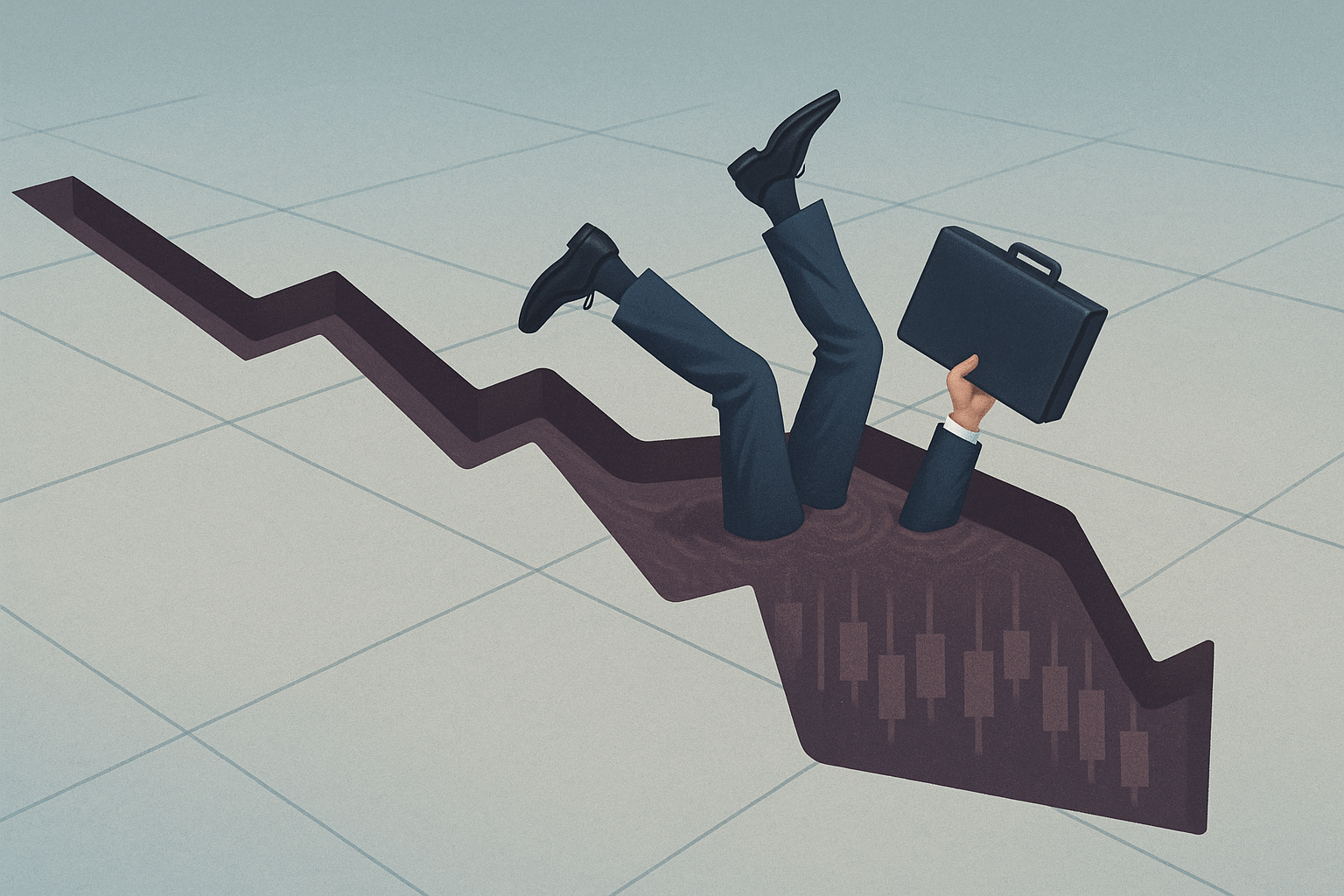Let's talk about those comeback stories we all love. You know the ones—companies on the brink of disaster that somehow claw their way back to glory. We cling to these narratives whenever our portfolios take a nosedive, convincing ourselves that redemption is just around the corner.
But here's the thing: most of those stories are outliers. Exceptions. Statistical anomalies.
A new Morgan Stanley analysis (which I've been waiting for someone to do for years) finally puts numbers behind what veteran investors have always suspected but rarely admitted aloud—the deeper a stock falls, the less likely it'll ever reclaim its former glory. And the relationship is downright mathematical.
After examining more than 6,500 companies, the findings are sobering. For stocks that dropped a "mere" 50-55%, about three-quarters eventually recovered. Not terrible odds, right? But for those poor souls whose shares plummeted over 95%? Only one in six ever made it back.
One. In. Six.
Let that sink in. That stock you're eyeing that's down 95% from its high? You've got about a 17% chance of ever seeing your money again if you jump in now. Those aren't odds—they're a financial death notice.
(I've been guilty of this magical thinking myself, having once convinced myself that a certain struggling retailer was "too big to fail" after it had dropped 80%. Spoiler alert: it failed spectacularly.)
The findings make intuitive sense when you think about it. A 50% decline might signal a fixable problem or temporary market disfavor. But when a company loses 95% of its value? Something is fundamentally, structurally broken in the business model. That's not a flesh wound—it's cardiac arrest.
Of course, this creates what I call the "lottery ticket paradox." The same data shows that when those deeply distressed stocks do recover—that rare one-in-six—they deliver absolutely spectacular returns. It's precisely why there's always someone willing to throw money at beaten-down names. We're hardwired to remember Amazon's comeback while conveniently forgetting the thousands of dot-coms that simply evaporated.
What makes this research particularly valuable isn't just the headline numbers. It's how it quantifies the gradient. This isn't a binary thing—it's a sliding scale of doom. Each additional 10% decline meaningfully reduces recovery odds. A stock down 70% is significantly less likely to recover than one down 60%, which itself has worse odds than one down 50%.
For anyone managing a portfolio, this creates some actionable wisdom. When one of your darlings drops 25%, you're still in fairly safe territory. At 50% down? Time for some serious soul-searching. And once you're looking at 70%+ drawdowns... well, you're essentially drawing to an inside straight.
Look, this matters right now. After watching speculative growth stocks, meme stocks, SPACs, and various crypto plays get absolutely obliterated in 2022, many investors have been betting on comebacks. Some will happen! Most won't. That's just math talking.
Having covered market cycles for over a decade, I've noticed that professional money managers instinctively understand these probabilities, which is why they typically employ stop-loss strategies. Limiting drawdowns isn't just about managing short-term volatility—it's about avoiding the statistical death zone altogether.
For us regular folks, though? The implications are mostly psychological. We tend to hold our worst-performing positions the longest, hoping against hope for a comeback, when statistically we should be most skeptical of exactly those positions. It's a perfect example of how our intuitions about probability can be dead wrong.
The next time you hear yourself thinking, "It's only a paper loss until I sell," remember the Morgan Stanley data. Sometimes cutting your losses isn't giving up—it's acknowledging reality.
After all, not all drawdowns are created equal. And once you're down deep enough, you're not investing anymore... you're just hunting for four-leaf clovers in a field of mathematical improbability.
